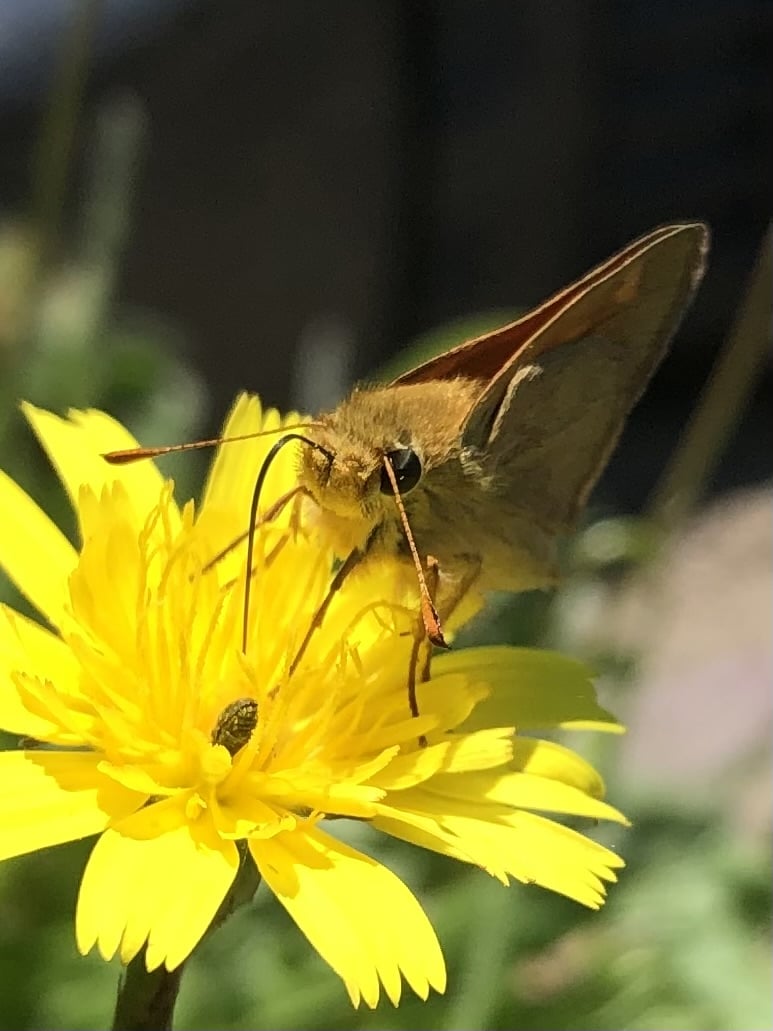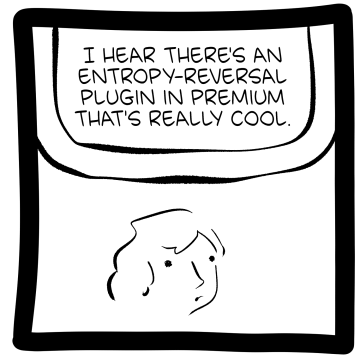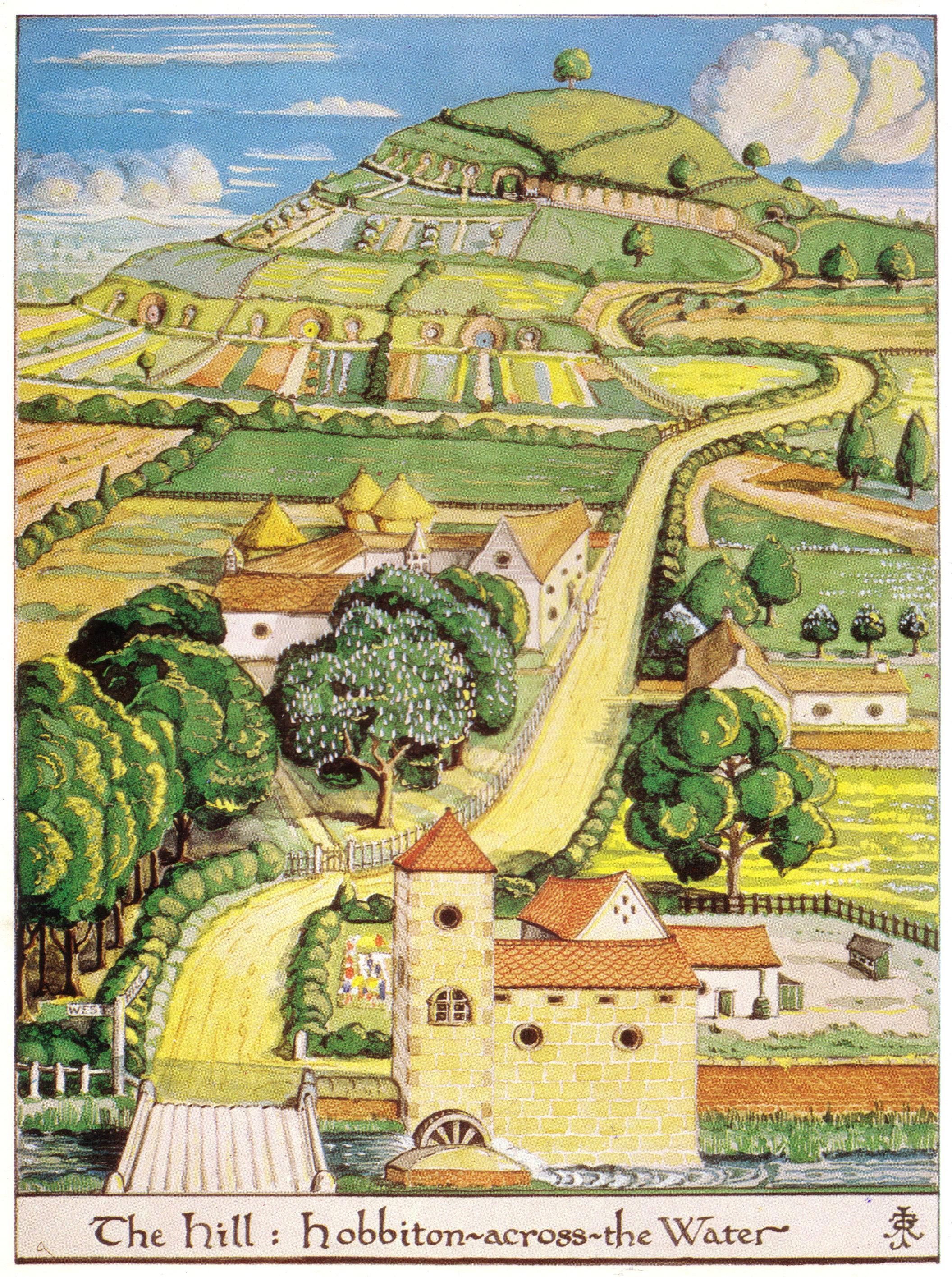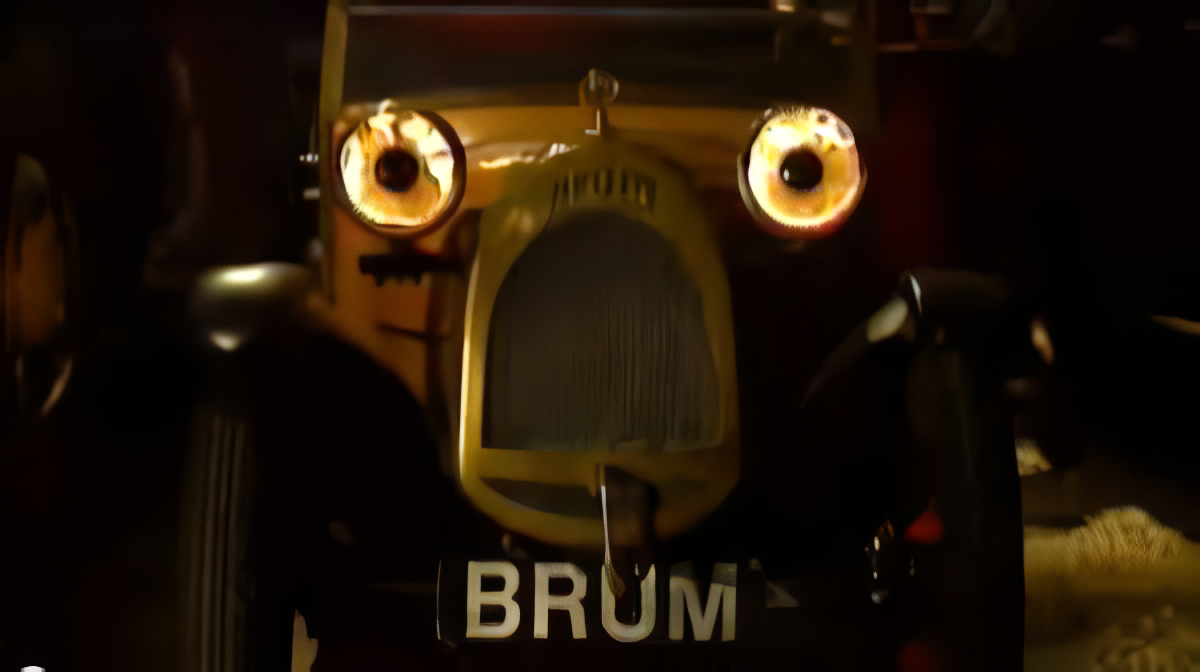Moved to @Crul@lemm.ee
- 65 Posts
- 146 Comments

 921·10 months ago
921·10 months agoFrom (Spanish) Las salpas, las extrañas criaturas que llenan las playas de Málaga
estos invertebrados no tienen nada que ver con las medusas, por lo que no son urticantes, (…)
“Son el paso intermedio entre los invertebrados y los vertebrados, puesto que tienen una primitiva columna, y forman parte del plancton, la sopa marina que es la base de la cadena alimenticia en el mar”, ha manifestado.
These invertebrates have nothing to do with jellyfish, so they are not stinging, (…)
“They are the intermediate step between invertebrates and vertebrates, since they have a primitive column, and they are part of plankton, the marine soup that is the base of the food chain in the sea,” he said.
Also on their website: Saturday Morning Breakfast Cereal - LLM
Hover text: Best you can do with cosmos-3.5 is get a universe that’s classical at low speeds.
RSS Feed: https://www.smbc-comics.com/comic/rss
Also on their website: Saturday Morning Breakfast Cereal - LLM
Hover text: Best you can do with cosmos-3.5 is get a universe that’s classical at low speeds.
RSS Feed: https://www.smbc-comics.com/comic/rss
By the way, both links in your post lead to two different Spanish editions, mine is the one from the second link.
Thanks… I must have had a brain fart. I don’t know why I though it was a German edition, probably the font (facepalm).
Fixed!

 2·1 year ago
2·1 year agoAwesome! Thank you very much for the heads up.
It seems to be working perfectly, even with videos. This is great!

 1·1 year ago
1·1 year agodeleted by creator
Also on Webtoons:
https://www.webtoons.com/en/challenge/system32comics/list?title_no=235074Which has RSS feed:
https://www.webtoons.com/en/challenge/system32comics/rss?title_no=235074

 3·1 year ago
3·1 year agoI thought you were Melvyn Yeo… then I looked at the picture :)

 2·1 year ago
2·1 year agoreturning to the old magic of RSS feeds
I love to read that, RSS-powah!
I’ve been missing this
You probably already saw it, but just in case, the WEBTOON page of The Weekly Roll has RSS feed (lnked above):
https://www.webtoons.com/en/challenge/the-weekly-roll/rss?title_no=358889such a hard time getting RSS feeds added to Feedly
I cannot help with Feedly, I use www.commafeed.com (2000 feeds limit on the public instance).
You may find help here:

 3·1 year ago
3·1 year agoFrom the description:
Taken at night in Singapore forest.
Quote from https://www.deviantart.com/users/outgoing?https://en.wikipedia.org/wiki/Jumping_spider Jumping spiders are among the easiest to distinguish from similar spider families because of the shape of the cephalothorax and their eye patterns. The families closest to Salticidae in general appearance are the Corinnidae (distinguished also by prominent spines on the back four legs), the Oxyopidae (the lynx spiders, distinguished by very prominent spines on all legs), and the Thomisidae (the crab spiders, distinguished by their front four legs, which are very long and powerful). None of these families however, has eyes that resemble those of the Salticidae. Conversely, the legs of jumping spiders are not covered with any very prominent spines. Their front four legs generally are larger than the hind four, but not as dramatically so as those of the crab spiders, nor are they held in the outstretched-arms attitude characteristic of the Thomisidae.[3] In spite of the length of their front legs, Salticidae depend on their rear legs for jumping. The generally larger front legs are used partly to assist in grasping prey,[4] and in some species, the front legs and pedipalps are used in species-recognition signalling.
The jumping spiders, unlike the other families, have faces that are roughly rectangular surfaces perpendicular to their direction of motion. In effect this means that their forward-looking, anterior eyes are on “flat faces”, as shown in the photographs. Their eye pattern is the clearest single identifying characteristic. They have eight eyes, as illustrated.[3][4] Most diagnostic are the front row of four eyes, in which the anterior median pair are more dramatically prominent than any other spider eyes apart from the posterior median eyes of the Deinopidae. There is, however, a radical functional difference between the major (AME) eyes of Salticidae and the major (PME) eyes of the Deinopidae; the large posterior eyes of Deinopidae are adapted mainly to vision in dim light, whereas the large anterior eyes of Salticidae are adapted to detailed, three-dimensional vision for purposes of estimating the range, direction, and nature of potential prey, permitting the spider to direct its attacking leaps with great precision. The anterior lateral eyes, though large, are smaller than the AME and provide a wider forward field of vision.
The rear row of four eyes may be described as strongly bent, or as being rearranged into two rows, with two large posterior lateral eyes furthest back. They serve for lateral vision. The posterior median eyes also have been shifted out laterally, almost as far as the posterior lateral eyes. They are usually much smaller than the posterior lateral eyes and there is doubt about whether they are at all functional in many species.
The body length of jumping spiders generally range from 1 to 25 mm (0.04–0.98 in).[3][5] The largest is Hyllus giganteus,[5] while other genera with relatively large species include Phidippus, Philaeus and Plexippus.[6]
In addition to using their silk for safety lines while jumping, they also build silken “pup tents”, where they shelter from bad weather and sleep at night. They molt within these shelters, build and store egg cases within them, and also spend the winter in them.[7]

 4·1 year ago
4·1 year agoFYI: I use this usercript to block whole instances: https://greasyfork.org/en/scripts/469297-block-lemmy-instances
You need to edit line 17Here adapted to work also with MLMYM (https://old.lemmy.world): https://pastebin.com/z0mShfDP

 12·1 year ago
12·1 year agoFYI: I use this usercript to block whole instances: https://greasyfork.org/en/scripts/469297-block-lemmy-instances
You need to edit line 17Here adapted to work also with MLMYM (https://old.lemmy.world): https://pastebin.com/z0mShfDP
FYI: Image previews for URLs with query params (the symbol ‘?’ and what comes after) do not work on some frontends (like mlmym / old.lemmy.world).
Current link (note the
?w=2048):
https://thejenkinscomic.files.wordpress.com/2023/07/414.png?w=2048Link without the query params:
https://thejenkinscomic.files.wordpress.com/2023/07/414.png

 4·1 year ago
4·1 year agoAFAIK that would be ok, a lot of subreddits don’t even require the posts to be approved, so that would be the same as setting your sub to not require approving and posting to it with a different account.
I was never downvoted on Reddit as hastily as I am on Lemmy.
Note that, unlike reddit, lemmy shows negative vote values. So it may seem a bit more dramatic compared to reddit.

 5·1 year ago
5·1 year agoSadly, that also hides all your own posts, even from your profile page. Which is invonvenient if you also want to keep an eye on them.
FYI: Image previews for URLs with query params (the symbol ‘?’ and what comes after) do not work on some frontends (like mlmym / old.lemmy.world).

 4·1 year ago
4·1 year agoFrom the source:
Just over a thousand years ago, the stellar explosion known as supernova SN 1006 was observed. It was brighter than Venus, and visible during the day for weeks. The brightest supernova ever recorded on Earth, this spectacular light show was documented in China, Japan, Europe, and the Arab world.
Ancient observers were treated to this celestial fireworks display without understanding its cause or implications. Astronomers now understand that SN 1006 was caused by a white dwarf star that captured mass from a companion star until the white dwarf became unstable and exploded. Recent observations of the remnant of SN 1006 reveal the liberation of elements such as iron that were previously locked up inside the star. Because no material falls back into a neutron star or black hole after this type of supernova explosion, the liberation of this star’s contents is complete. It represents, therefore, a cosmic version of Independence Day for this star.
This is a composite image of the SN 1006 supernova remnant, which is located about 7000 light years from Earth. Shown here are X-ray data from NASA’s Chandra X-ray Observatory (blue), optical data from the University of Michigan’s 0.9 meter Curtis Schmidt telescope at the NSF’s Cerro Tololo Inter-American Observatory (CTIO; yellow) and the Digitized Sky Survey (orange and light blue), plus radio data from the NRAO’s Very Large Array and Green Bank Telescope (VLA/GBT; red).
This combined study of the Chandra, CTIO and VLA/GBT observations shows new evidence for the acceleration of charged particles to high energies in supernova shockwaves. An accompanying Hubble Space Telescope image of SN 1006 shows a close-up of the region on the upper right of the supernova remnant. The twisting ribbon of light seen by Hubble reveals where the expanding blast wave is sweeping into very tenuous surrounding gas.
Fast Facts for SN 1006:
Credit: Credit:X-ray: NASA/CXC/Rutgers/G.Cassam-Chenai, J.Hughes et al.; Radio: NRAO/AUI/NSF/GBT/VLA/Dyer, Maddalena & Cornwell; Optical: Middlebury College/F.Winkler, NOAO/AURA/NSF/CTIO Schmidt & DSS
Release Date: July 01, 2008
Scale: Image is 55 arcmin across.
Category: Supernovas & Supernova Remnants
Coordinates (J2000): RA 15h 04m 10.01s | Dec -41° 53´ 44.88"
Constellation: Lupus
Observation Date: 04/08/2003 - 04/11/2003
Observation Time: 61 hours from 11 pointings
Obs. ID: 3838, 4385-4394
Instrument: ACIS
Also Known As : SNR 327.6+14.6
References : G. Cassam-Chenaï et al. (2008), ApJ, 680, 1180
Color Code: X-ray (blue); Radio (red); Optical (yellow & orange)
Distance Estimate: About 7,000 light years


















Source: Socks and Puppets, the comic » 779 – Summoning Ray
If I’m not mistaken: @ahdok@ttrpg.network
RSS Feed: https://comicpress.socksandpuppets.com/feed/